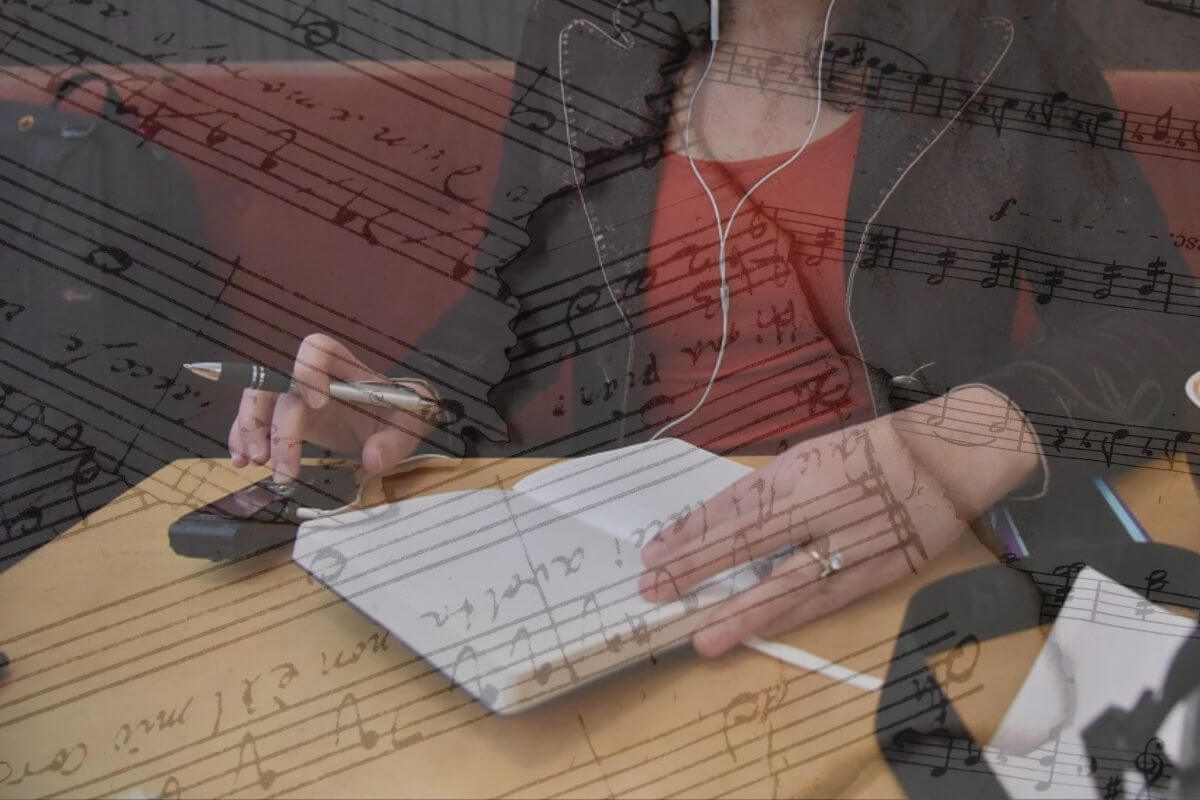It’s All About the Rhythm: Conducting Your Interview Like a Symphony

I sat on the edge of my seat in my interview cubicle. My speaking notes were ready beside me and I was plugged into the landline with my recording interface.
The slug read, “Cambie-Canada Line.” It was 2006 and I was set to interview a Vancouver business owner on how construction was impacting their business. Stammering through the intros — did I forget to introduce myself altogether? — I began rapid-firing questions. The words poured out of my mouth before I could even register thought. Luckily, the interviewee must’ve felt for this fresh-faced student journalist. They answered my questions as best they could; I scribbled down my shorthand and triple-checked my recorder was working. And just as I thought I had it in the bag, then came those dreaded words: “But don’t print that,” and “That’s off the record, okay?” Come on! This wasn’t Watergate. They were no Deep Throat. I hung up, feeling defeated, and looked down at my notes. Wait — did I even get their last name?
LEARNING THE BASIC CHORDS IN J-SCHOOL
J-school was a lot of trial and failure, much like the real world. The learning was hard and fast. The relationships built along the way were lasting, in part because of the shared experience of punishment that came with whipping us into shape. There was nothing glamorous about it. I wasn’t automatically an award-winning journalist for the Daily Planet with Clark Kent as a love interest in the cubicle next door (although I would later go on to play roller derby under the name Lois Slain). It was the 2000s. Everyone was saying that print was dead. But my stubborn, relentless determination to prove “them” wrong began to pump through my veins. I was by no means born a writer, or student for that matter, but I had grit and that’s something that still serves me well to this day.
Throughout my career as a journalist it was imperative to introduce myself clearly from the get-go, as I was often cold-calling busy people. Collecting full names and confirming spellings was crucial; asking about preferred titles and getting consent for quoting them, essential. I know, it sounds basic, right? But you wouldn’t believe the human ability to stuff it up when nerves come into play. In any interaction as a reporter, trust has to be established immediately because you don’t let your source review your copy. General practice is they trust you did your due diligence and fact-checked, gathered an opposing viewpoint to show fairness (a standing journalistic value), and edited for accuracy.
Print may present itself in black and white, but in the newsroom we were constantly discussing the gray areas. Newsroom discussion is always lively — and probably what I miss most of all. I’m talking about judgment, and not only news judgment but ethical judgment. Instinctual human kindness mixed with a relentless hunger to get the story out fast. The level of responsibility that comes along with the job can create change and impact both small and large. All of this is fuel for your interview. Not to mention, there’s a daily deadline looming and you have a handful of other stories to write. For me, the art of the interview back then looked much different than it does today. There’s very little comparison between reporting and the work I do now as a content and copywriter/editor. But I still apply many of the same principles I learned in school and in my nearly 10 years as a community news reporter/editor.
5 STEPS FOR WALTZING YOUR WAY THROUGH AN INTERVIEW
Today, my work looks very different; most interviews are with my clients, so they get to review the copy I produce before it’s published. But that aside, the major tips and tricks remain the same. So here they are — my five suggestions on how to capture a solid interview:
1. Come just the right amount of prepared.
Review stories in the press about your subject, check them out on social media, examine what you want to get from your interview, and jot down some questions ahead of time. But don’t come scripted. In fact, expect the conversation to have a life of its own. Allow the interviewee to be part of that dance, but keep leading them so no one stubs their toes. Some of the best bits come from that off-script banter, but you don’t want to waste their time or yours, so you do have to guide them. Be like Oprah: ask open-ended questions to give them room to answer the question their way. Listen. Intensely. When they answer your question, note any additional thoughts that spring to mind, and follow up either right then or save it for after you’ve gone through other key points. Be prepared to rephrase your question if they don’t get it the first time, and be sure to use plain language.
2. Give them the lay of the land.
Set yourself up for success by introducing the point of the conversation, your interest in them or the subject, and what you’re hoping to achieve. Let them know approximately how long the interview will take and double-check that the timeline indeed works for them. Explain you will be quoting them (and recording if you choose), and ensure you respectfully clear any personal details so you can properly inject them into your article. Beyond confirming spelling of first and last names, nowadays it’s best practice to ask them their preferred pronouns, too. The last thing you want is to inaccurately introduce them. A spelling error in a name stings, especially in print. It doesn’t quite warrant a retraction, but I can speak from experience when I say a misprint damages your spirit a little and you’ll find yourself obsessively copy-editing your stories in your sleep for months afterwards.
3. Make them feel comfortable.
The best way to help someone relax is to be yourself. I know that sounds corny and like it could be applied as advice to any sort of pitch (insert “how to find romance” or “how to make friends” here), but it’s the honest truth. No fabricating here. As a reporter, I liked to say I knew a little bit about a lot, because every day whatever hit the assignment desk was a crash course, while I was also being constantly pelted with breaking news. So, how much do you actually know about mudslides? How about forest fires, centurion birthdays, train derailments, court proceedings, or Earth Day river cleanups? The community news mixed bag is comparable to a fully loaded sack of 5-cent candies at 7-Eleven (yes, I was doing this when candies still cost 5¢). So be honest. Let them know you’re passionate about getting the story and you will be relying on their expertise to capture it. Lean in like George Stroumboulopoulos does when he’s getting to know someone. Be kind, be patient, be charismatic, but don’t make the interview about you — because it’s not.
4. Tell it like it is.
Dig in and digest their words. Ensure you take notes and also consider recording your conversation. This is an important step so you can revisit the interview for clarity. Back in my reporting days, this was a way to cover your butt in case the person you quoted argued that’s not what they said. I’d keep a record for a couple of years before disposing of my notebooks and audio files, which is something I still do today. You want to capture the facts, yes, but also get a feel for their personality, their tone, and their delivery. To me, this is the best part of interviewing people. If I can capture their true voice in my writing, I have done my job. How do you know you’re getting the good stuff? Often the interviewee will start to sound almost apologetic for getting so heated (but not like this). You’ve sparked a fire in them and it all comes blazing out. As they accentuate points with a rising voice, you begin to move from interviewing to writing the piece in your head.
5. Have fun!
Yes, another one that might seem a bit cliché, but it’s so important to relax and enjoy the process. You don’t need to go full Hunter S. Thompson gonzo or anything, but lighten up. Whether in person, over video, or even phone call, smiling does help set the tone. Enjoy yourself and ensure whoever you’re interviewing is, too. Check in with them to let them know they’re doing great, be respectful of their time, and do timestamps (e.g., “we have about 10 minutes left at this point”) so you can make arrangements should you need to extend your chat further or schedule a follow-up interview. Ask them a few offbeat and open-ended questions: “What keeps you committed?” or “What inspires you to get involved?” are excellent questions that often spark emotion, which is what you want to convey through writing. A story should capture the hearts and minds of its readers and bring them on a journey, even if it’s a short one. By injecting emotion, relatable quotes, and relevant facts you ensure your reader will feel fulfilled. And writing a story with these components is reliant on the art of the interview.
STILL FEELING THE BEAT
While I don’t report from a newsroom anymore, I do produce and distribute press releases across British Columbia and sometimes to national or international news outlets. Knowing what it’s like to be on the other end receiving the news gives me a leg up. It also makes me feel like I’m still part of that daily grind that I loved so much. I will forever be a newspaper woman. The production wheel is always spinning, churning, and pressing and I like to be a gear in the machine.
If you need assistance deciding whether something is newsworthy and well-suited for a press release, reach out! I love any opportunity I can get to connect with you. Forever inspired and fascinated by the human condition, I will always be asking questions. I am so honoured by those of you that choose to share your triumphs, challenges, and milestones with me and the rest of us at Writer’s Block Solutions. You inspire the heck out of us and we can’t wait to hear your stories and help you tell the world.

